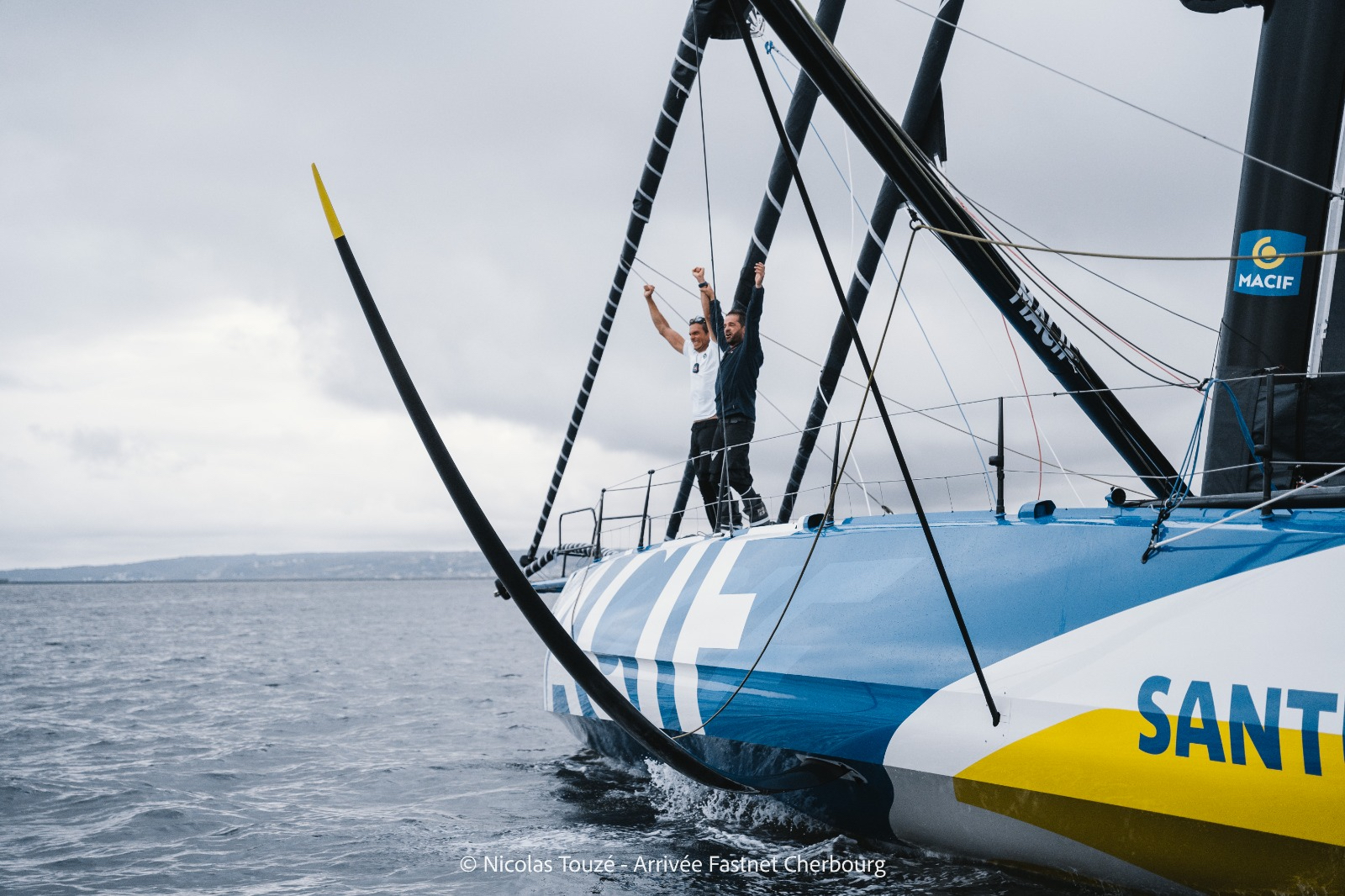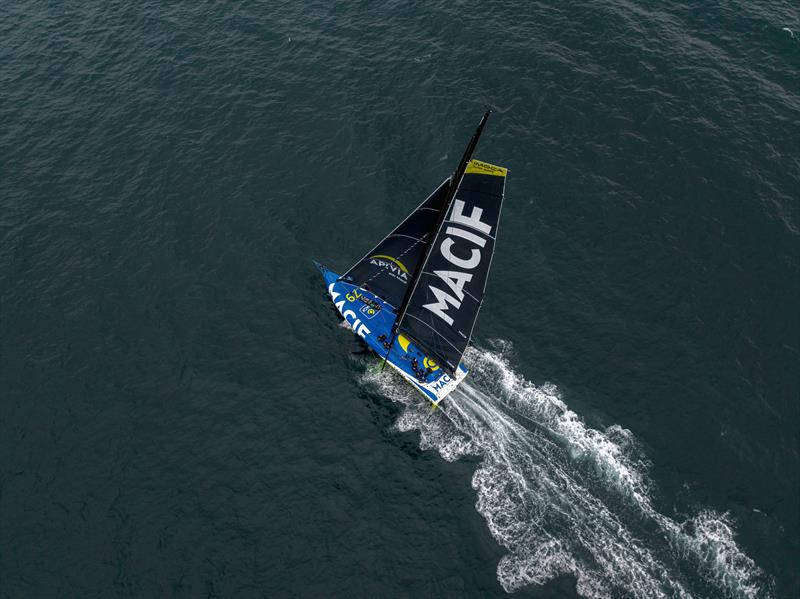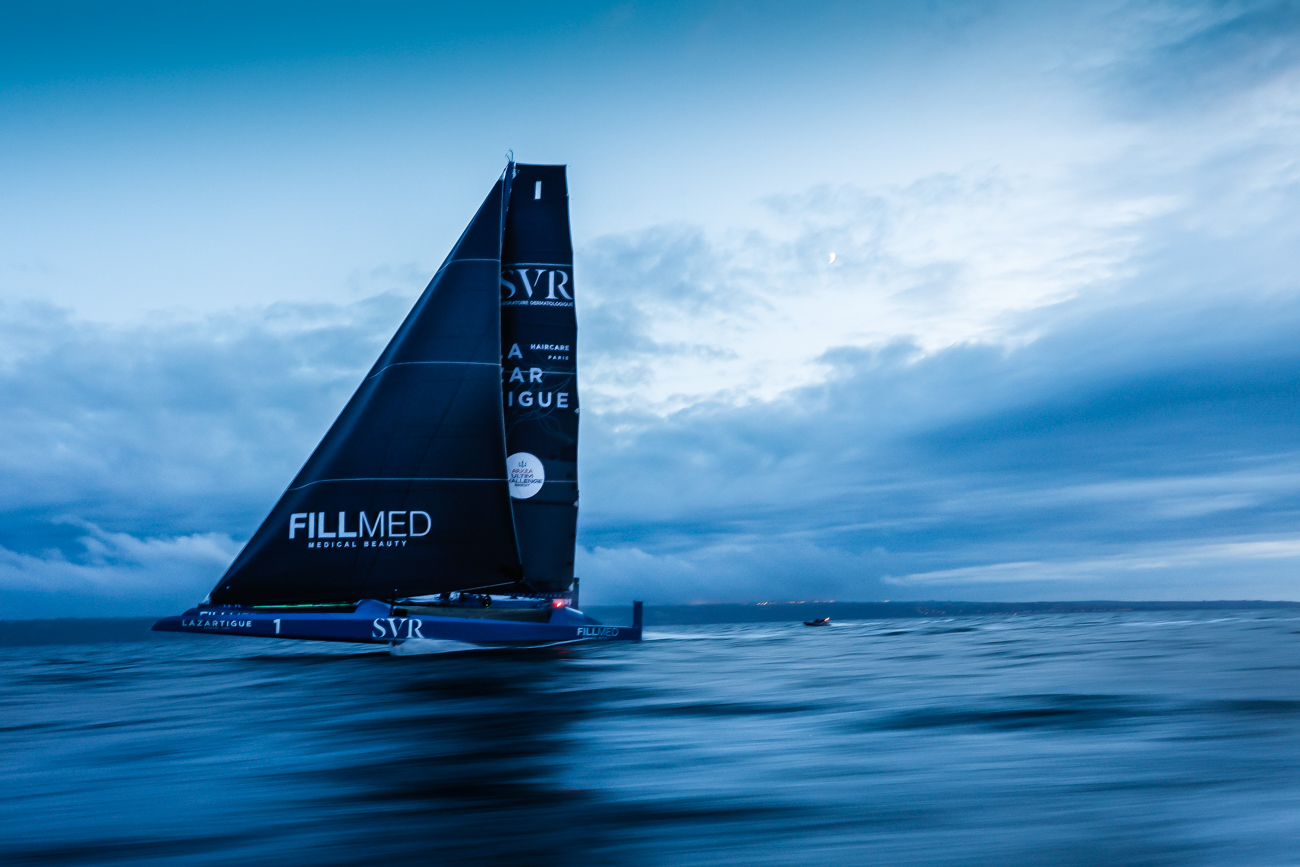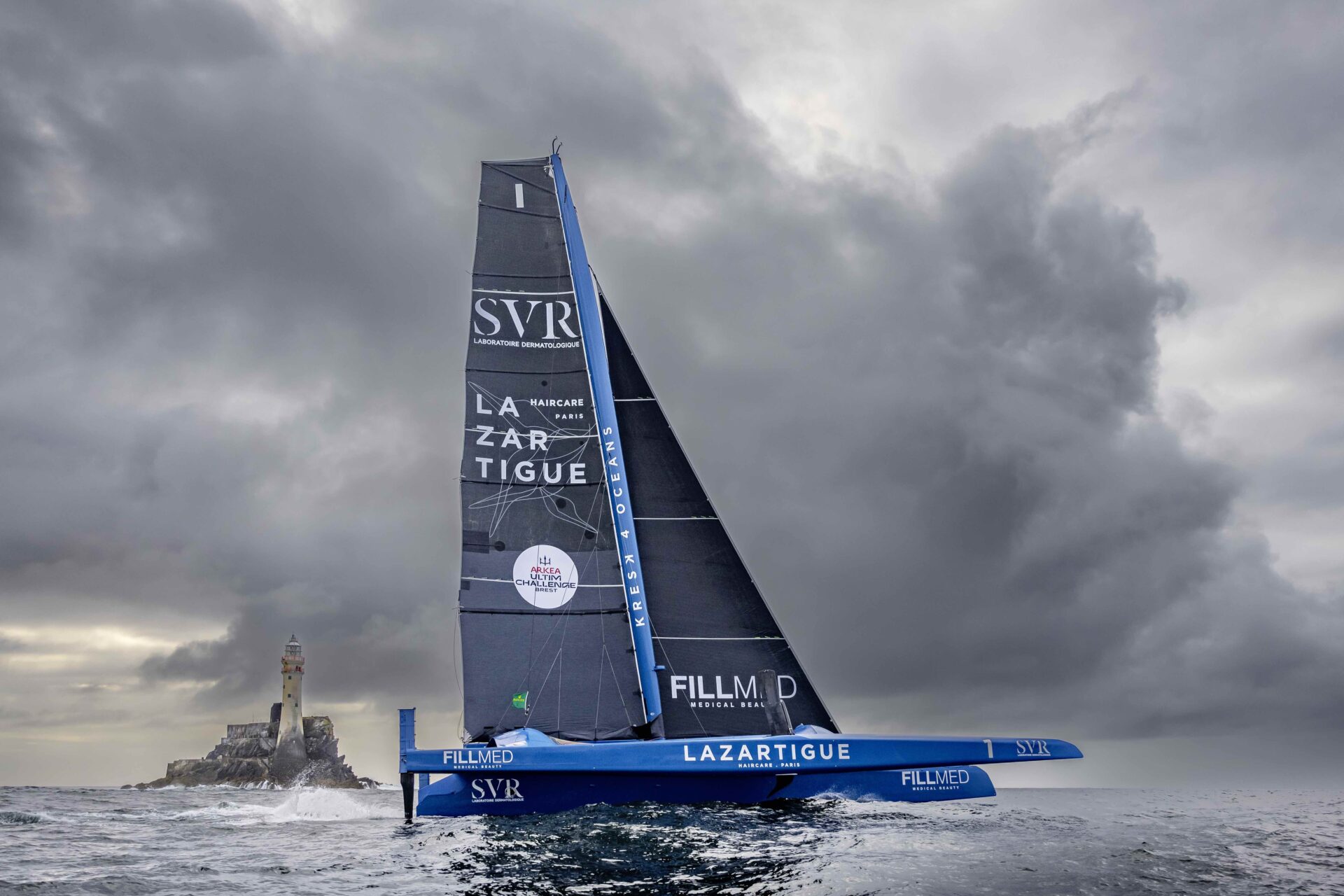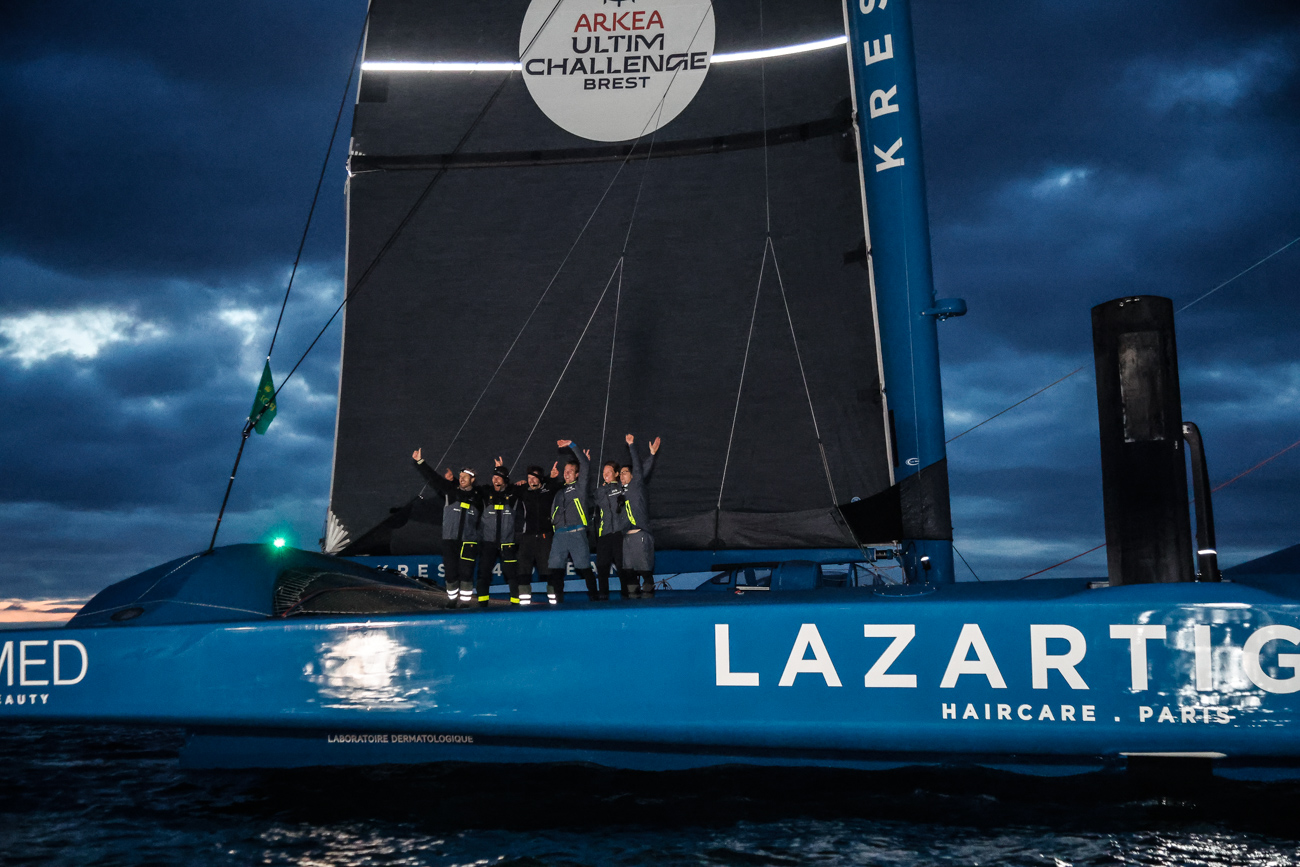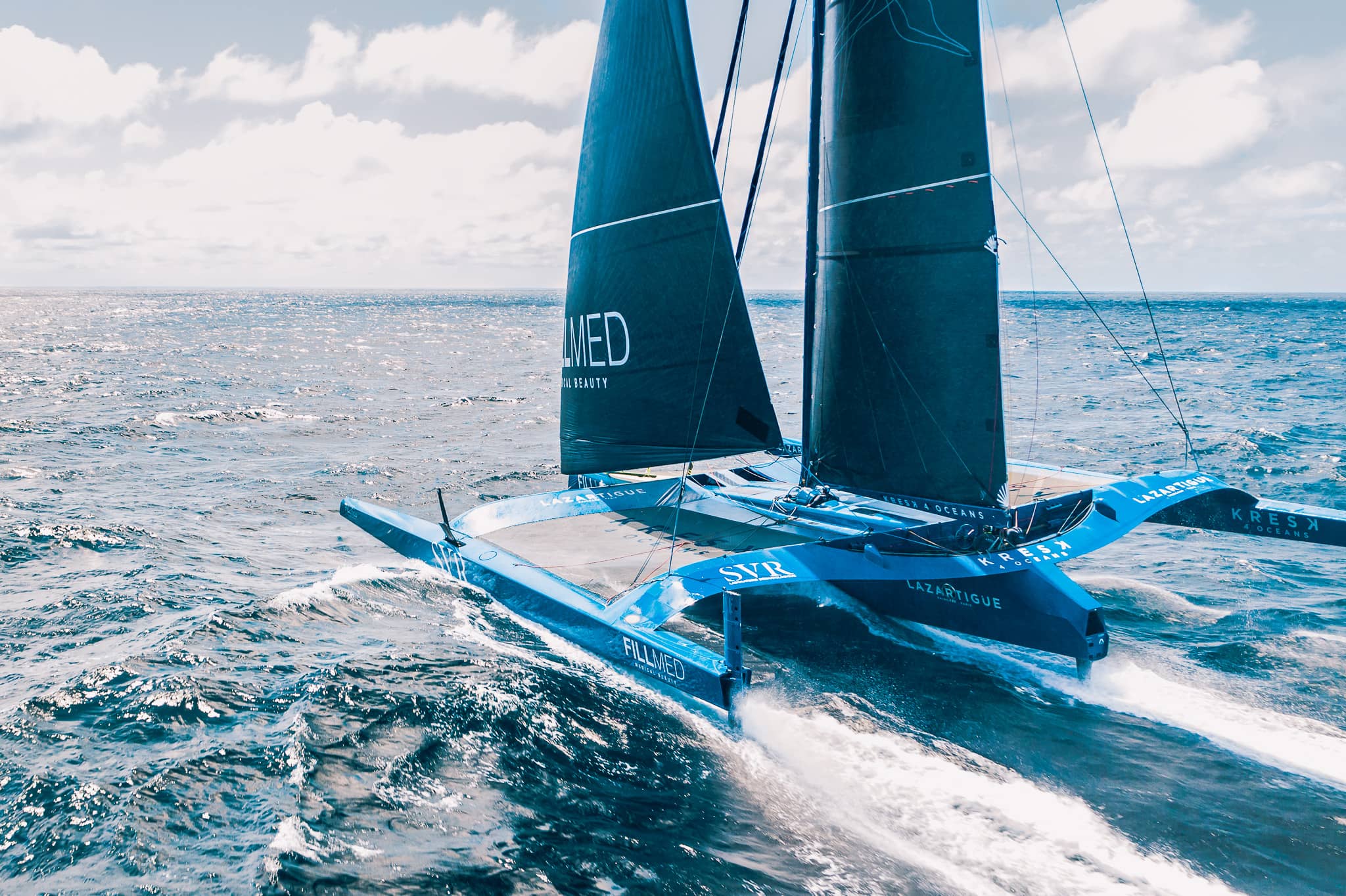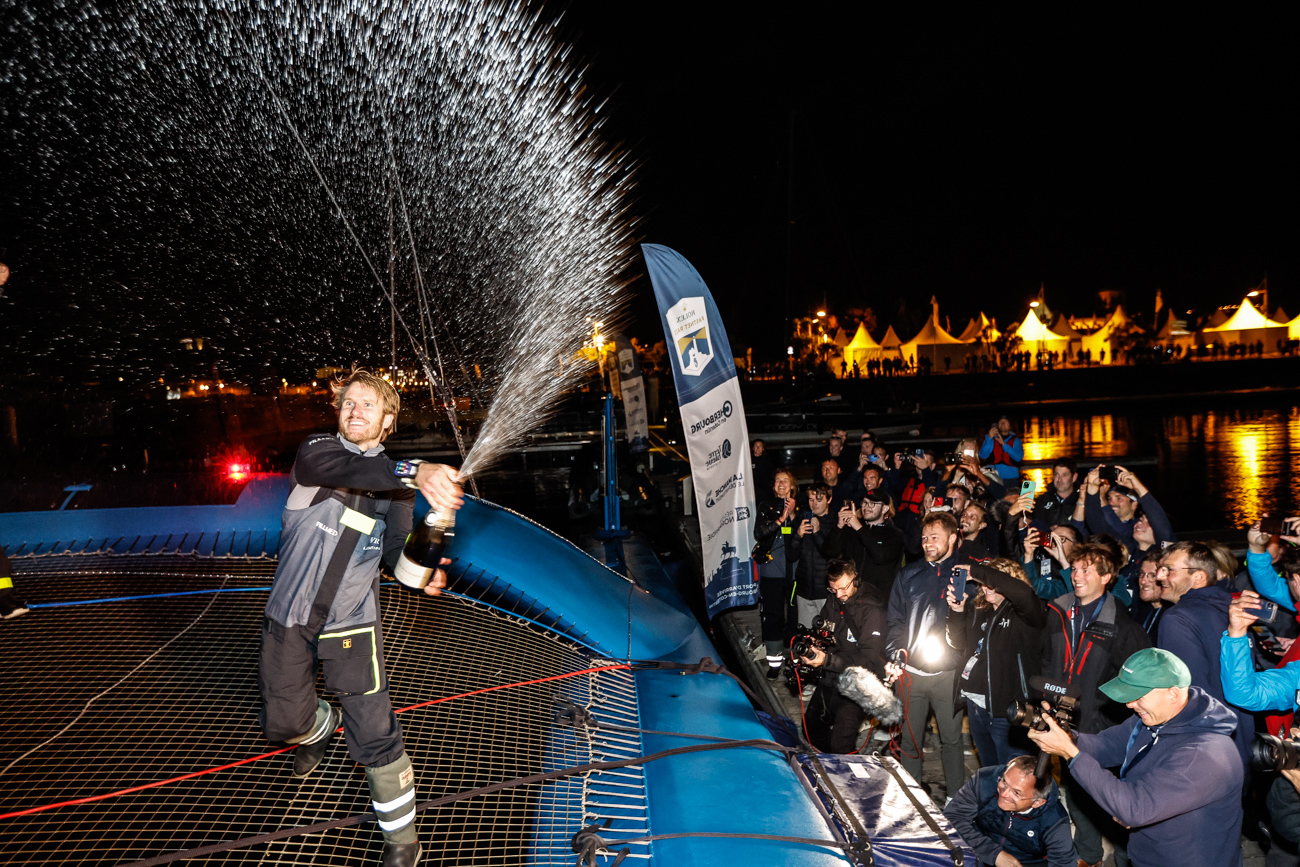Fastnet records fall
Charlie Dalin and Pascal Bidegorry on board their brand new IMOCA MACIF Santé Prévoyance crossed the finish line of the 50th Rolex Fastnet Race at 20:31:26 BST this evening.
25 July 2023
Advertisement
In winning the 50th Rolex Fastnet MACIF Santé Prévoyance: Won the highly competitive IMOCA class by 4 minutes and 6 seconds ahead of Paprec Arkéa sailed by Yoann Richomme and Yann Elies. They were first in a field of 29 starters; Won monohull line honours, ahead of race favourite Bryon Ehrhart’s 88ft Lucky; Set a new monohull race record of 2 days 7 hours 16 minutes and 26 seconds for the new course to Cherbourg beating Skorpios’ 2021 time of 2 days 8 hours 33 minutes and 55 seconds, an improvement 1 hour 17 minutes 29 seconds.
Impossibly close Ocean Fifty victory for Berry and Joubert
Earlier this evening Anglo-Frenchman Luke Berry and Antoine Joubert on Le Rire Medecin Lamotte crossed the Cherbourg finish at 19:59:04 to claim the title in the Ocean Fifty trimaran class.
Advertisement
They had been locked in a match race with Viabilis, sailed by Pierre Quiroga and Justin Baradat since Saturday afternoon when the boats departed Cowes, winning the class by just 1 minute 26 seconds.
They arrived on the heels on Erik Maris’ MOD70 Zoulou, which crossed the line at 18:03:15 with a crew including multihull legend Loick Peyron and America’s Cup winner Thierry Fouchier.
The 32m Ultim Trimaran SVR Lazartigue, skippered by François Gabart has taken Multihull Line Honours in the 50th Edition of the Rolex Fastnet Race.
Having been so dramatically pipped at the post by Maxi Groupe Edmond de Rothschild in the last breath of the 2019 race, François Gabart and his team, this time racing the giant 32m long flying trimaran SVR Lazartigue, rectified this wrong by being first home in the 50th anniversary Rolex Fastnet Race, winning the Ultim class.
SVR Lazartigue’s elapsed time of 1 day 8 hours 38 minutes and 27 seconds, bettered the outright Multihull Race Record, set by skippers Charles Caudrelier and Franck Cammas of Maxi Edmond de Rothschild in 2021 by 36 minutes and 27 seconds.
The 32m long by 23m wide, foil-borne, flying Ultim trimarans are by far the biggest, fastest offshore race boats on the planet.
Many believe that their covering 1,000 miles in a day is a case of ‘not if, but when.’ Inevitably they are sailed by the best of the best offshore sailors: Gabart and Le Cléac’h, for example, are both Vendée Globe winners (2012 and 2016) respectively.
A key moment in their race came earlier on when heading south across the Channel; SVR Lazartigue tacked to the north of the Casquets TSS, while Banque Populaire held on starboard only tacking once they were off the Cotentin peninsula – just three hours after starting!
According to Gabart they were waiting for a right shift coming with the front, but Le Cléac’h’s reasoning was similar. In fact, the northern route was shorter, but going south was a little windier. In the event, north of the TSS, SVR Lazartigue did see fractionally less wind (typically around 30 knots) and they sailed with one reef and J4, compared with Banque Populaire XI’s two reefs.
However, as Banque Populaire was approaching the Cotentin Peninsula the glass windscreen protecting the helm position on the port side was shattered by a big wave, the shards cutting the top of Le Cléac’h’s head.
“There was a lot of blood so we slowed down the boat for 20 or 30 minute because we didn’t know how serious it was,” recounted Le Cléac’h.
“I had a big bandage [around my head] – like an egg! After that the bleeding stopped and we decided to continue the race, but it was difficult to steer the boat because we had no protection on the port side. We used the pilot but it wasn’t as good in the big waves.”
Two of the crew were also seasick in the conditions.
The end result was that when the two boats converged at the southern tip of the Land’s End TSS just after midnight, SVR Lazartigue was 15 miles ahead. Both made good speed across the Celtic Sea, and in the lighter winds and flatter sea they were able to foil upwind at 30 knots.
At the Fastnet Rock their separation had changed little, Gabart’s team roughly 45 minutes ahead as they reached off towards Bishop Rock hitting speeds into the mid-30s.
Here Le Cléac’h attempted to head low to leave the more northerly of the TSS’s to the west of the Scillies to starboard as Gabart was lining up to leave it to port. However, SVR Lazartigue’s crew responded and bore off to cover, passing Bishop Rock at 1330. This was the fastest part of the race where they touched 40 knots.
Downwind back into the Channel and the wind was shifting significantly between the clouds. Here Le Cléac’h again attempted to mix it up by heading north of the Casquets TSS as Gabart went south (swapping sides compared to their outbound passage only a few hours earlier). The gamble didn’t pay and victory went to SVR Lazartigue, first by 58 minutes 16 seconds.
The gale force winds seemed to have made little impression on the two ocean racing giants. In both skippers felt that the most scary but uplifting part of the race was the start.
As Gabart put it: “It is never easy to leave the Solent. Doing it in an Ultim is even more difficult. Doing it with 400 boats around you is harder still. And if you do it upwind…in 25 knots…! It is not easy! We were happy to make it out of the Solent. I think if there had been more than 30 knots at Hurst, we wouldn’t have done it. After that the waves were strong, but we could still race and in the end, we broke nothing.”
Despite losing, Le Cléac’h felt they had been competitive. “It was a very good race with very difficult weather conditions at the start – a lot of wind, upwind in the Solent. For our boats it is not a simple thing!”
After the incident with the screen breakage, Le Cléac’h observed that the speed of the two boats was very similar but there hadn’t been many passing lanes.
“Without my head injury we might have been ahead because I think in those conditions we are a little faster. But for five or six hours we weren’t concentrating properly because I was hurt.”
While SVR Lazartigue docked in Cherbourg’s Marina Chantereyne, upon finishing Le Cléac’h came ashore to congratulate his rival.
Sailing on SVR Lazartigue along with Gabart was his Transat Jacques Vabre co-skipper Tom Laperche, the team Technical Director Antoine Gautier, Émilien Lavigne, the boat’s R&D manager, Sébastien Col and Swiss two-time Volvo Ocean Race sailor Élodie-Jane Mettraux.
Thus, Mettraux was the first woman to finish the 50th Rolex Fastnet Race. While known for her round the world sailing, Mettraux has raced multihulls a lot on Lake Geneva…only never this big.
“I feel really lucky to be here – it was amazing to discover this kind of boat with these amazing sailors. I’m really happy. I learned a lot of things and I think it’s great women are offered this kind of opportunity, because it’s the only way we can gain confidence and more knowledge and skills so we can race on other boats in the future.”
Mettraux, of the famous Swiss pro sailing family (her sister Justine is currently holding sixth place in the IMOCA class as skipper of Teamwork) has now joined The Famous Project, an all-female campaign for the Jules Verne Trophy (fully crewed non-stop around the world record) which will also take place on an Ultim.
So this was good training. “I’ve learned that the manoeuvres take time – you really have to think before you do anything because, in the end, it is a big boat,” she said.
“It was good to see how they were managing during the rough sea state last night and running everything. That was good learning that I’ll have for the future.”
Advertisement
Advertisement
Advertisement


